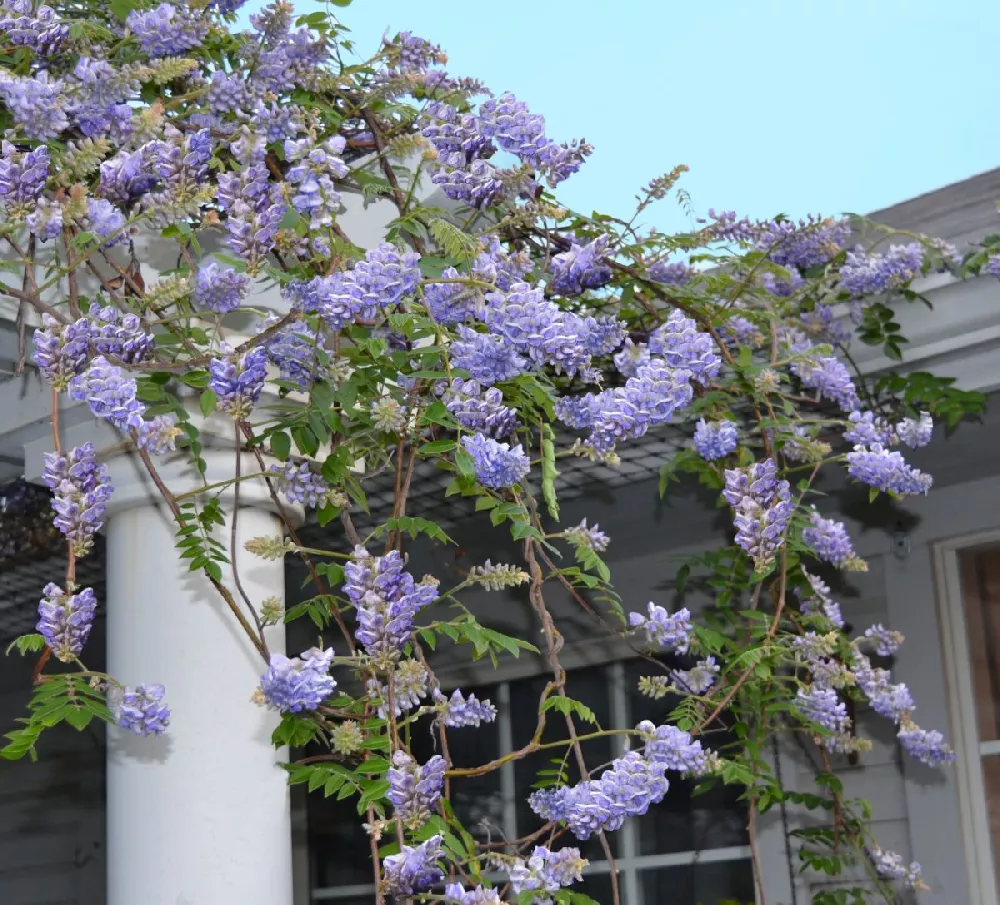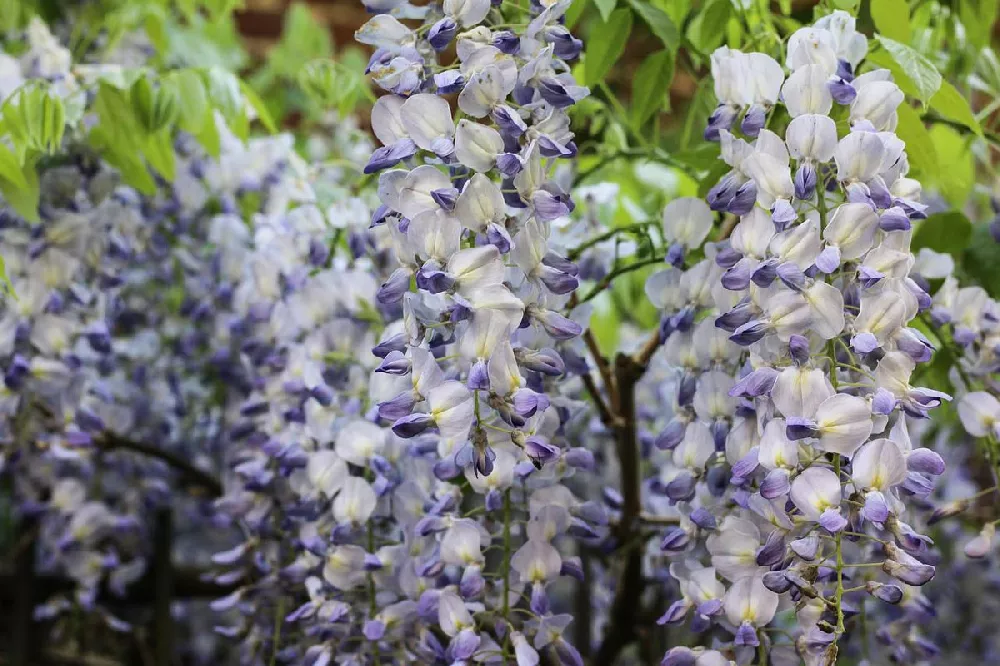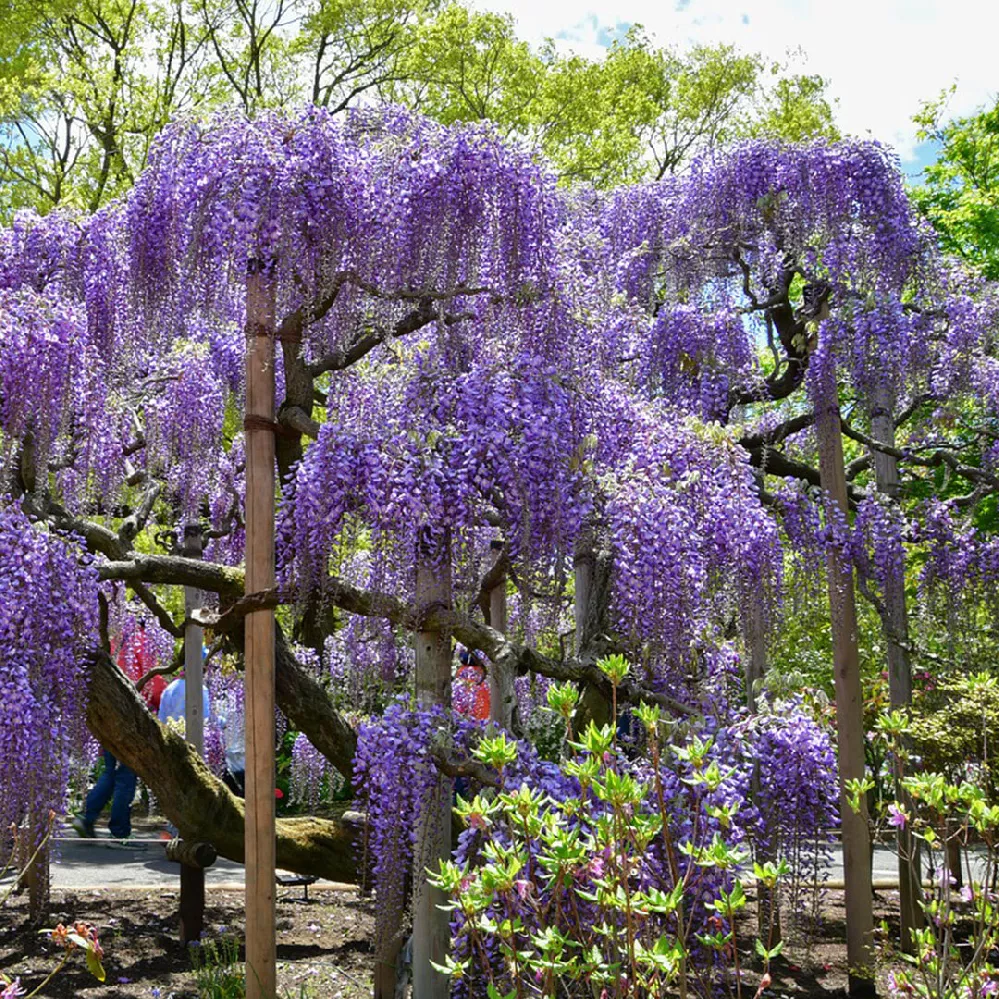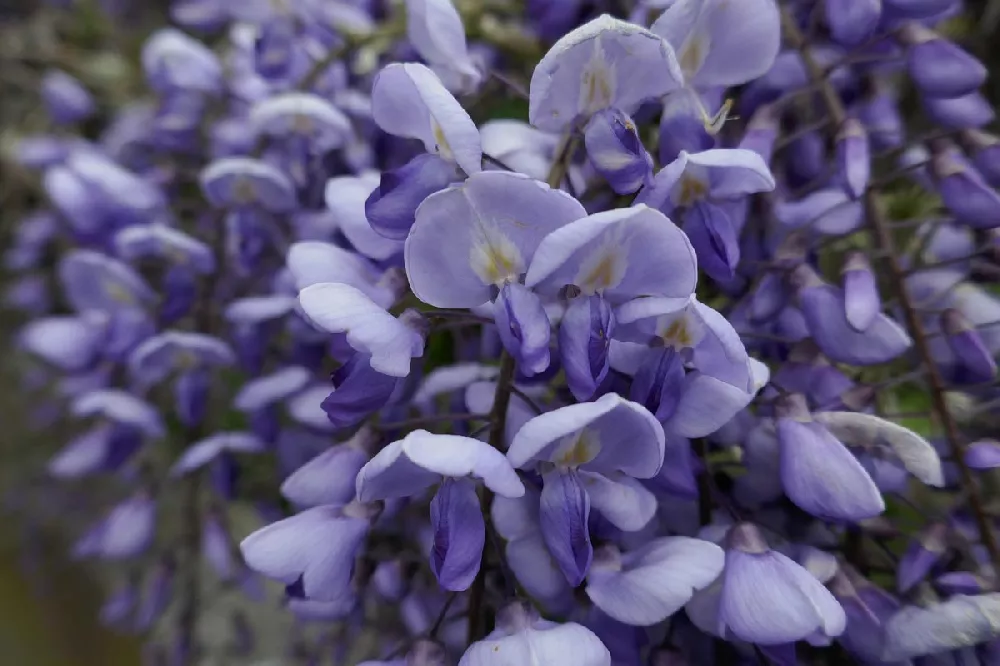- Home >
- Wisteria Vines
Wisteria Vines for Sale - Buying & Growing Guide
4 Results
Wisteria Vines – Buying & Growing Guide
Wisteria vines produce impressive dangling flowers and can grow on nearly any structure. This vigorous vine grows quickly and is easy to maintain. If you have a pergola, trellis, or arbor in your yard, allowing a wisteria vine to climb it is an excellent way to create a stunningly beautiful look.
How to Plant Wisteria Vines
Giving enough space is the most crucial aspect of planting a wisteria vine. Generally, you should leave about 15 feet of space between your new wisteria vine and existing plants nearby. Otherwise, your wisteria vine will quickly overtake other plants in your garden.
You should also plant your wisteria vine where it has the chance to climb, which gives this plant the best chance to exhibit its most impressive form. If you want to encourage flowering, ensure your wisteria vine lives where it can get six hours of light per day. It’s also wise to give this plant some wind protection as cold weather in the early spring can negatively affect the blooms.
How to Grow Wisteria Vines
- When. It is best to plant wisteria vines during the spring or fall season. However, wisteria vines can survive being planted at any time of year in some cases.
- Where. Plant a wisteria vine where it can receive full sunlight and enjoy well-draining soil. You should also be wary of planting wisteria close to other plants that it may outcompete.
- How. The planting process for wisteria vine is the same as for any other woody plant. What’s most important is giving this plant plenty of adjacent space where it can expand.
How to Care for Wisteria Vines
- Watering. Water needs are quite low for wisteria vines. During prolonged drought or hot weather, moisten the soil. Otherwise, a mature wisteria vine should survive with little to no supplemental water.
- Nutrients. Similar to water needs, the fertilization needs for wisteria vines are also low. You can fertilize yours once per year. Phosphorus is the most important nutrient for this plant as it promotes healthy flowering.
- Pruning. Pruning is a must for wisteria vines. These plants increase their size considerably each year. In response, you should prune at least twice per year. It’s ok to prune hard to control this plant’s spread as it will respond with plenty of new growth.
- Pollination. Wisteria vines bloom in the spring and summer and rely on pollinator species. During that time, each bloom will attract insects and birds to conduct pollination.




